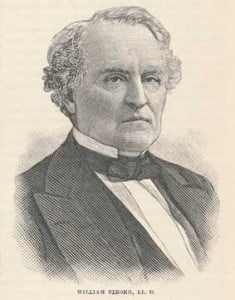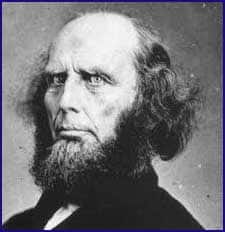This Day in Presbyterian History:
A Supreme Court Justice Plants a Church
When forty thousand Christians on December 4, 1973 started a new Presbyterian Church, they were understandably excited beyond measure for the fruition of plans to begin a Bible-believing, Gospel-preaching church true to the Scriptures, the Reformed Faith, and the Great Commission. Though they essentially had left the Southern Presbyterian church (PCUS), they had a vision of impacting the whole nation. So they named their denomination the National Presbyterian Church. They immediately however encountered a road block to the choice of that name. There already was a congregation by that name, the National Presbyterian Church, located in Washington, D.C., and this local church had a national mission to all the states and even beyond, primarily as an endorsing authority for military chaplains. So in the second year of its existence, the new denomination changed its name to the Presbyterian Church in America.
National Presbyterian Church [the congregation] had its beginnings in two PCUSA congregations located in the nation’s capitol. The First Presbyterian Church, which began in the last decade of the seventeen hundreds in our nation’s capitol, was the home of countless presidents. Chief executives like Jackson, Polk, Pierce, Buchanan, Cleveland made this their Washington home church.
 The other congregation which joined to make National Presbyterian what it is today was Covenant Presbyterian Church. It was begun when eleven ruling elders of New York Avenue Presbyterian Church met in the home of Supreme Court Justice William Strong on March 11, 1883 to plant another Presbyterian church in the capitol. Its first service was in 1889 and it was dedicated in 1901. Early attenders were President Harrison and Alexander Graham Bell. It became the home church of President Dwight David Eisenhower, when he was elected to this high position.
The other congregation which joined to make National Presbyterian what it is today was Covenant Presbyterian Church. It was begun when eleven ruling elders of New York Avenue Presbyterian Church met in the home of Supreme Court Justice William Strong on March 11, 1883 to plant another Presbyterian church in the capitol. Its first service was in 1889 and it was dedicated in 1901. Early attenders were President Harrison and Alexander Graham Bell. It became the home church of President Dwight David Eisenhower, when he was elected to this high position.
Both churches united and were designated as the National Presbyterian Church as an action of the Presbyterian Church USA in 1946. Thus, they did not wish any confusion as to what would be considered the National Presbyterian Church.
In hindsight, the decision to change the denominational name rather than contest the matter, while gracious, was also providential. For so the churches, sessions, and elders who came out of the PCUS church in 1973 were then enabled to choose what their real calling was to be, namely, the Presbyterian Church in America.
Words to Live By: God doesn’t ever make any mistakes. If an action in your life, or the life of your church, at first seems a puzzle, just wait for God’s providence to make it clear.
Through the Scriptures: Joshua 1 – 3
Through the Standards: Why the Redeemer is Both Jesus and Christ, according to the Confession
WCF 8:3
“The Lord Jesus, in His human nature thus united to the divine, was sanctified, and anointed with the Holy Spirit, above measure, having in Him all the treasures of wisdom and knowledge; in whom it pleased the Father that all fullness should dwell; to the end that, being holy, harmless, undefiled, and full of grace and truth, He might be thoroughly furnished to execute the office of a Mediator and Surety. Which office He took not unto Himself, but was thereunto called by His Father, who put all power and judgment into His hand, and gave Him commandment to execute the same.”
Remembering Our Fathers and Brothers, passed into glory on this day, March 11, in
1983 – the Rev. John Knox Bowling.
2005 – the Rev. Richard Summers.



![Egon Middelmann [16 March 1942 - 8 March 1994]](https://thisday.pcahistory.org/wp-content/uploads/2012/03/MiddelmannE_06.jpg)
